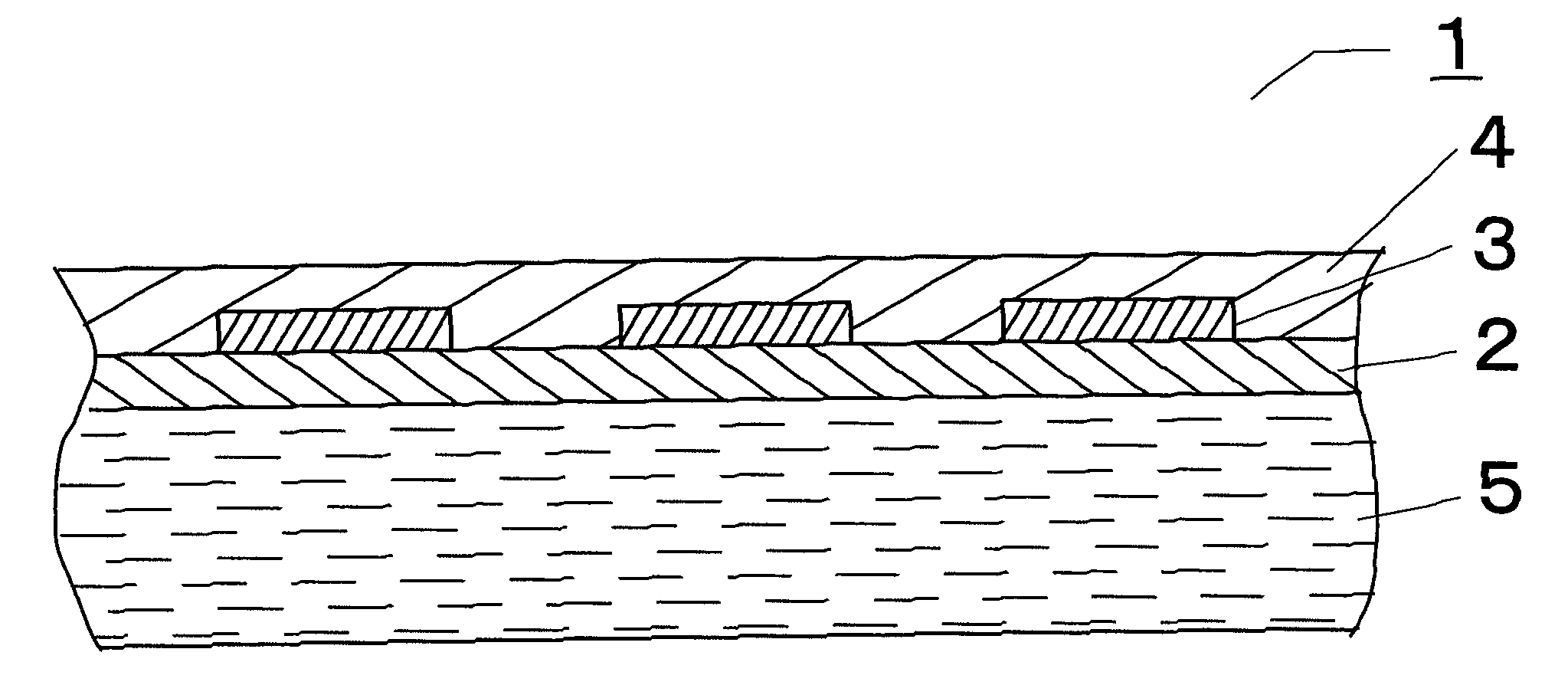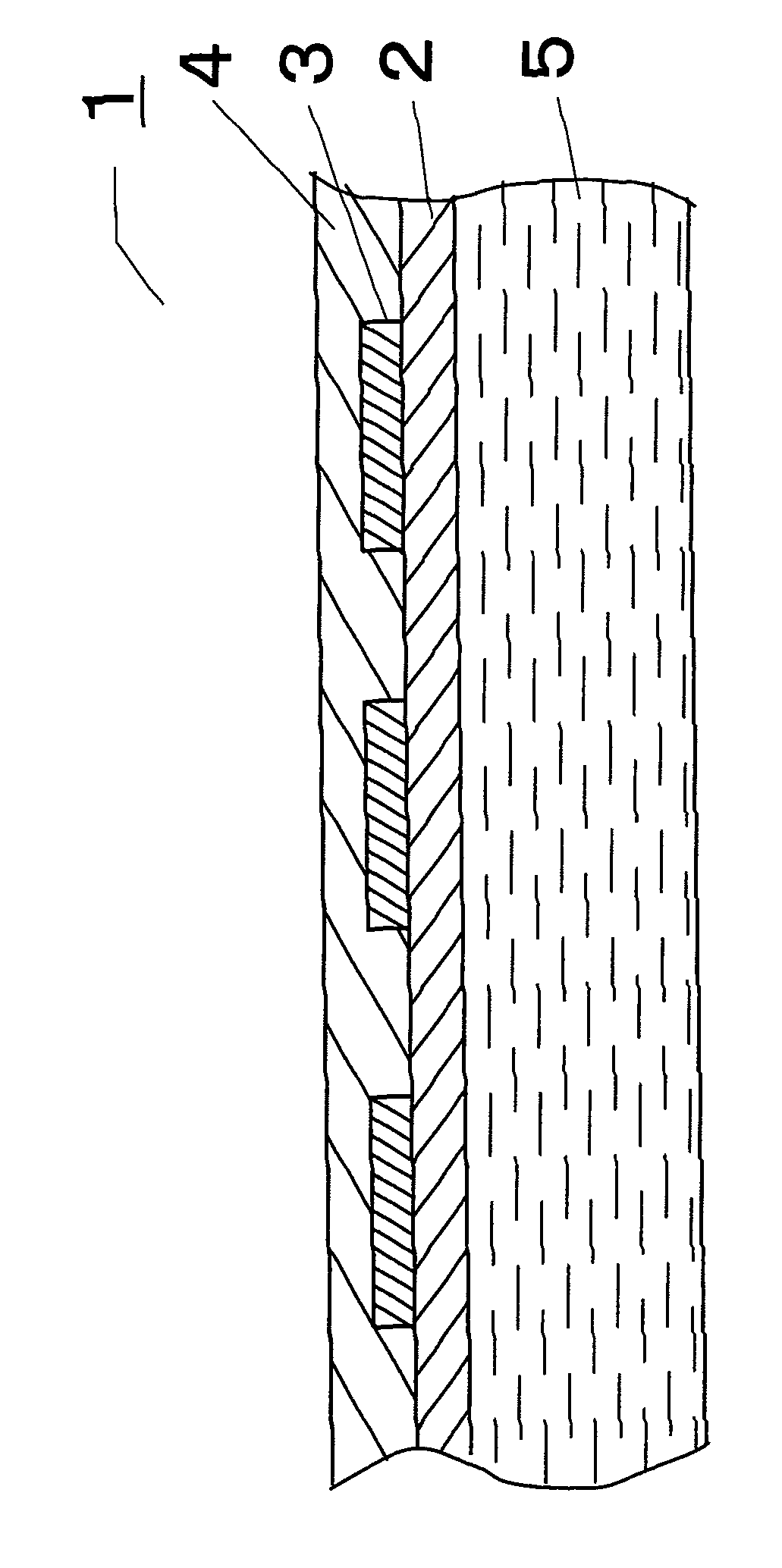Decorative plate and method for manufacture thereof
a technology of decorative plates and plates, applied in the field of decorative plates, can solve problems such as cracks in working, surface layer peeling, and inability to work in three-dimensional forms
- Summary
- Abstract
- Description
- Claims
- Application Information
AI Technical Summary
Benefits of technology
Problems solved by technology
Method used
Image
Examples
example 1
[0045]A nonwoven fabric manufactured by Awa Paper Mfg. Co., Ltd. prepared by using polyester fibers having a basis weight of 95 g was used as a base material, and a picture was printed thereon with a solvent base ink (“MPF-A”, cellulose acetate base resin, manufactured by The Inktec Co., Ltd.) to obtain a decorative sheet. The above decorative sheet was impregnated with a melamine resin (“Cymel”, manufactured by Mitsui Cyanamide Co., Ltd.), and a craft paper impregnated with a phenol resin was laminated on a rear face (a side in which the picture layer was not provided) thereof. The laminate was subjected to hot press molding and cooled down to room temperature as it was to obtain a thermosetting resin decorative plate. The above laminate was integrated on the above hot pressing condition, but the melamine resin was not completely cured. The above decorative plate was subjected to membrane press (three-dimensional working) to find that three-dimensional working could be made and tha...
example 2
[0046]A thermosetting resin decorative plate was obtained in the same manner as in Example 1, except that a nonwoven fabric manufactured by Japan Vilene Company Ltd. prepared by using polyester fibers having a basis weight of 100 g was used as the base material. Three-dimensional working could be made as was the case with Example 1, and formation of cracks and peeling of the surface layer were not observed in working. Further, the elongation rate thereof was measured as was the case with Example 1 by the method described above. The result thereof is shown in Table 1.
example 3
[0047]A thermosetting resin decorative plate was obtained in the same manner as in Example 1, except that a mixed paper (basis weight: 100 g, manufactured by Miki Tokushu Paper Mfg. Co., Ltd.) (pulp:polyester fibers (mass ratio)=50:50) was used as the base material. Three-dimensional working could be made as was the case with Example 1, and formation of cracks and peeling of the surface layer were not observed in working. Further, an elongation rate of the thermosetting resin decorative plate obtained was measured as was the case with Example 1 by the method described above. The result thereof is shown in Table 1.
PUM
| Property | Measurement | Unit |
|---|---|---|
| elongation rate | aaaaa | aaaaa |
| diameter | aaaaa | aaaaa |
| temperature | aaaaa | aaaaa |
Abstract
Description
Claims
Application Information
 Login to View More
Login to View More - R&D
- Intellectual Property
- Life Sciences
- Materials
- Tech Scout
- Unparalleled Data Quality
- Higher Quality Content
- 60% Fewer Hallucinations
Browse by: Latest US Patents, China's latest patents, Technical Efficacy Thesaurus, Application Domain, Technology Topic, Popular Technical Reports.
© 2025 PatSnap. All rights reserved.Legal|Privacy policy|Modern Slavery Act Transparency Statement|Sitemap|About US| Contact US: help@patsnap.com


